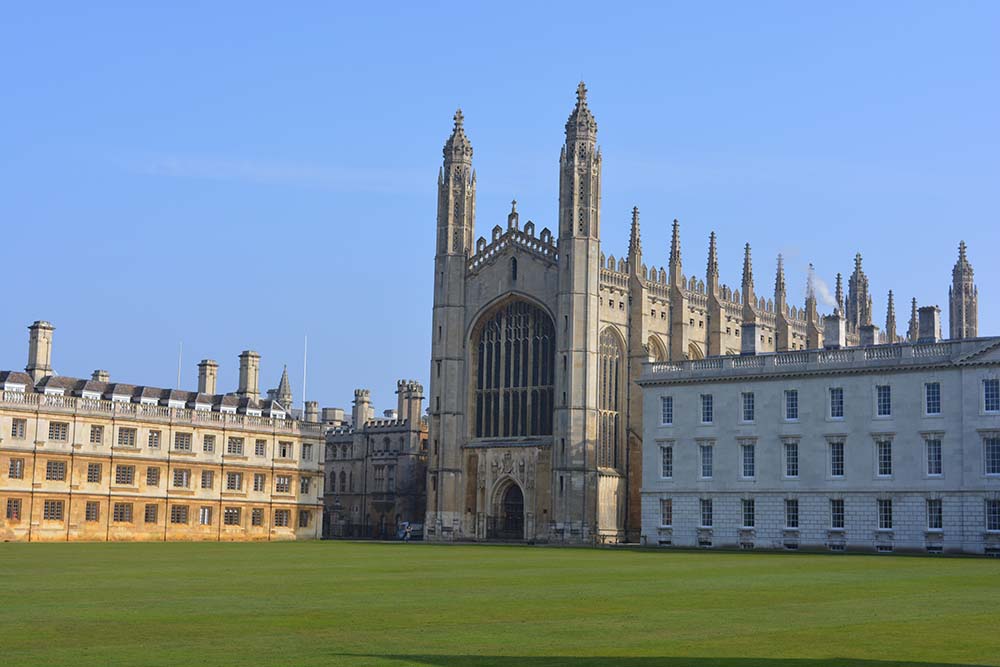
The east of England holds a wealth of things to do and see. Whether you’re interested in history, art, renowned English cities, royal estates, coastal walks, or natural landscapes, the east of England offers something for practically everyone.
So let’s take a glimpse of just some of those sights and activities.
Constable country
Here’s a corner of England that offers a timeless embrace of so much that is great in its art and natural beauty. Just as the name suggests, Constable country is a natural beauty captured in the paintings of an idyllic rural England by John Constable.
You will instantly recognise some of the most iconic vistas of the English countryside the moment you enter the Area of Outstanding Natural Beauty (AONB) that is Dedham Vale, spanning the border between Suffolk and Essex. Along the way, make sure to visit the village of East Bergholt – where Constable was born – and the watermill on the River Stour, Flatford Mill, which inspired one of Constable’s most recognised works.
Sudbury
It must be something in the water they drink in Suffolk because there’s yet another village that gave birth to a renowned English painter – the village of Sudbury, the birthplace of Thomas Gainsborough.
Not only can you visit the charming village, though, but also the very house in which the artist was baptised on the 14th of May 1827 – the Independent Meeting House which you can find on Friars Street and which has been developed by the charitable trust that owns it as a museum and centre for all things to do with Gainsborough.
Sandringham
There’s nowhere quite like the royal estate of Sandringham in Norfolk.
The royal residence of Sandringham House is set in more than 600 acres of parkland which you can explore along well-maintained trails by bicycle or on foot, with or without man’s best friend (but remember to keep your pet on a short lead in more heavily populated area of the park).
The House, its Gardens, and St Mary Magdalene Church are open to the public daily from the 23rd of March until the 11th of October – except for the period between the 19th of July and the 1st of August.
Holkham beach
Even the beach at Holkham on the Norfolk coast has a royal connection. It is here that a certain Princess Victoria – later to become the long-lived monarch – came in 1835. She was so taken with this escape to nature that she and later generations not only stayed at Holkham Hall but also picnicked in a royal beach hut (said to be a particular favourite of Queen Elizabeth the Queen Mother).
You are entirely free to roam the endless expanse of unspoilt golden sands before retiring for a spot of shade from the sun or shelter from the wind in the pine forests that back the dunes.
Cambridge
It might have been little more than a day trip, but you can say you went to the University of Cambridge – you could even try your hand at aping student life there by punting along the River Cam.
A visit to Cambridge offers so much more than a peek into the lives of its illustrious students. Towards the end of July, for instance, there is the Cambridge Folk Festival – one of the longest-running annual festivals in the world – countless museums and galleries, theatres, cinemas, and shopping in the outdoor Market Square.
Ipswich
Ipswich in Suffolk is the town that brings the past right up to the present in an appealing blend of the historic and modern.
This charming combination is probably nowhere better expressed than Ipswich Waterfront. Here, modern restaurants and cool bars jostle with historic buildings that help to paint the 1,500 years or more of the maritime and agricultural heritage that makes it one of England’s oldest towns.
Whether you explore the town on foot or from one of the many boat tours along the River Orwell, Ipswich offers a unique blend of England’s past and a glimpse of its still vibrant future.

